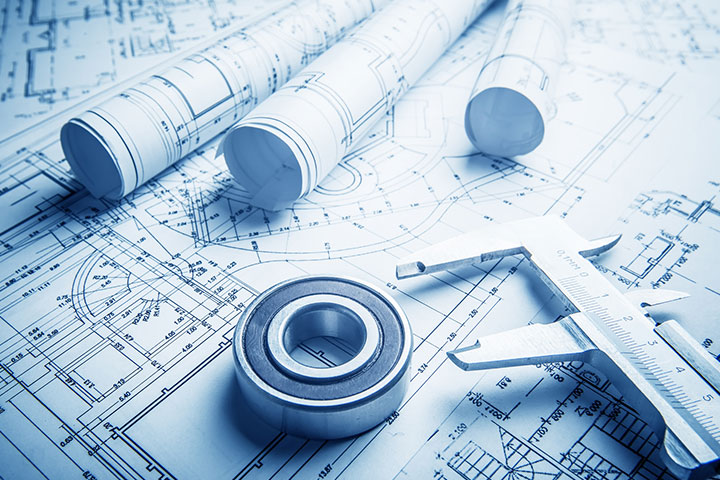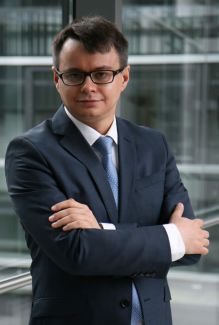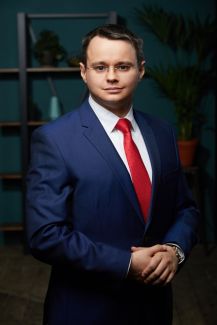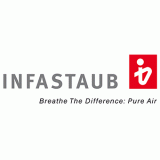
The conformity assessment of medical devices and medicines is a mandatory procedure of state supervision. By conducting this procedure the fulfillment of safety and quality requirements shall be assessed. Following the conformity assessment, a certificate in form of a state registration of medical devices and drugs as well as an EAC declaration is issued in order to confirm that the medical and medicinal products are in compliance with the minimum requirements of the technical regulation in Russia, Kazakhstan and the EAEU. The purpose of the conformity assessment is to guarantee the safety of the products. Furthermore it is not possible to export commodities to Russia, Kazakhstan and the EAEU without such a certificate.
Legal framework
In the EAEU the requirements for medical devices have been harmonized. The basis for the conformity assessment of industrial plants is provided by the legislation of the EAEU and the Russian Federation and especially by the following regulations and decisions:
- Agreement on Common Principles and Rules for Circulation of Medical Products (Medical Devices and Medical Equipment) within the Eurasian Economic Union of december 23, 2014
- Decision no. 46 of the Council of the Eurasian Economic Commission of february 12, 2016 “On the Rules of registration and professional examination of the safety, quality efficacy of medical products”
- The treaty on the Eurasian Economic Union of may 29, 2014
- Decision no. 173 of the Eurasian Economic Commission Board of december 22, 2015 “On Approval of Rules for Classification of Medical Products Depending on the Potential Risk of Their Use”
- Decision of february 12, 2016 no. 27 “On Approval of General Requirements for safety and efficacy of medical products, requirements for their marking and operational documentation on them”
- Decision of the Eurasian Economic Commission Council of february 12, 2016 no. 26 “On Special Trademark of Circulation of Medical Products in the Market of the Eurasian Economic Union”
Scope of application
According to the Agreement on Common Principles and Rules for Circulation of Medical Products within the EAEU of december 23, 2014, all tools, devices, equipment, material and other products used individually or in combination with each other for medical purposes count as medical devices. The same applies for all supplies, that are necessary for the intended use of these products (including special softwares).
Medical devices are meant for prevention, diagnosis, treatment of diseases, medical rehabilitation of the human body condition, medical research, transformation of anatomical structures or physiological functions of the body or termination of pregnancy. The functional purpose of these products is not only realized by pharmacological, immunological, genetic or metabolic effects on the human body, but is also supported by medication. In vitro diagnostics also count as medical devices.
Conformity assessment procedure for medical devices
The EAC marking usually has to be carried out for such medical devices, that underlie the TR CU 020/2011 “On the electromagnetic compatibility”.
The state registration is valid for all kind of medical devices.
Classification of medical devices according to danger class
According to the decision of the Eurasian Economic Commission Board of december 22, 2015 no. 173 “On Approval of Rules for Classification of Medical Products Depending on the Potential Risk of Their Use”, medical devices are subdivided in 4 danger classes:
- class 1 – low risk potential: microscope, scale, medical clothing ecc.
- class 2а – average risk potential: lenses, laboratory equipment, inhalation devices ecc.
- class 2b – high risk potential: intraocular lenses, condoms, X-ray machines, infusion pumps, defibrillators ecc.
- class 3 – very high risk potential: hip and knee joint implants, cardiac catheter, breast implants, lithotripter ecc.
Procedure of state registration for medical devices
State registration and inspection are necessary prerequisites for selling products on the market of the EAEU. The registration is conducted by the government authority. In Russia the Federal Authority for health control - Roszdravnadzor - is responsible for it. After the successful completion of the conformity assessment procedure a registration certification is issued. The registration certification is open-ended and valid in every member state of the EAEU.
The state registration is carried out in the following manner:
- Preparation of the necessary documentation (technical documentation, instruction manual, pictures and drawings as well as other relevant documentations) and if necessary the correction of the submitted documentations according to the legal requirements
- Application to Roszdravnadzor
- Testing of the medical devices
- Issue of registration certification
You can find more informations about the state registration of medical devices here.
EAC declaration process
The EAC-declaration process is the following:
- Specification of the product
- Determination of the declaration scheme
- Selection of samples and testing them
- Issue of declaration
- Marking of the product
You can find more information about the EAC declaration here.
EAC-MED Marking

The EAC-MED Marking signifies that a medical device complies with the established safety, quality, and performance requirements of the Eurasian Economic Union (EAEU). It confirms that the product has successfully passed the state registration and conformity assessment procedures in accordance with the EAEU technical regulations.
Medical devices placed on the common market of the EAEU must bear the EAC-MED Mark as a mandatory indication of conformity. This marking ensures that the product can be legally distributed and used within all EAEU member states. Products sold without proper labeling may be subject to fines, withdrawal from the market, or confiscation.
The specifications for the EAC-MED Marking are defined by the Decision of the Eurasian Economic Commission Council of february 12, 2016 no. 26 “On Special Trademark of Circulation of Medical Products in the Market of the Eurasian Economic Union".
In addition to confirming compliance, the EAC-MED Mark also enhances product transparency and traceability across member countries, reassuring healthcare providers and patients that the medical devices meet unified regional standards for safety and effectiveness.
Authorized representative
A manufacturer of medical devices or medicines that is not established in a Member State of the Eurasian Economic Union (EAEU) is not entitled to apply directly for conformity assessment or registration of their products under the applicable EAEU regulations.
To obtain EAC Сertificate or EAC Declaration, a foreign manufacturer must appoint an authorized representative located in one of the EAEU Member States.
This representative acts on behalf of the manufacturer in all matters related to EAC Certification and EAC Declaration, including cooperation with EAEU-accredited certification bodies and testing laboratories, ensuring that the medical devices and medicines meet the applicable safety and quality requirements of the technical regulations.
According to current legislation, only an operator based within the territory of the Eurasian Economic Union may be designated as an authorized representative. For European, American, or Asian producers, this is a mandatory prerequisite for certification and market access to the EAEU.
Schmidt & Schmidt assists producers from Europe, America, and Asia in designating an authorized representative within the EAEU. Through our legally compliant solution via Kazakhstan — an EAEU Member State — we ensure the issuance of EAC Certificates and EAC Declarations. With our local offices, we guarantee that the entire conformity assessment process not only complies with the technical regulations of the Eurasian Economic Union but is also conducted in accordance with European and American sanctions regulations. In this way, our clients gain reliable and lawful access to the EAEU market.
Compliance with EU and US sanctions in the context of medical devices and medicines

When certifying and declaring the conformity of medical devices and medicines for the Eurasian Economic Union (EAEU) market, European and international manufacturers must not only meet the technical regulations of the EAEU but also strictly comply with EU and US sanctions. These sanctions may affect the export of certain vehicle components, trade with listed individuals or entities, and the provision of engineering or certification services. Failure to observe these requirements can result in disrupted business operations and potential civil or criminal liability.
The issue is particularly sensitive for exports to Russia and Belarus. Since 2014, numerous embargoes and restrictive measures have been introduced, directly influencing the EAC conformity assessment of automotive parts. For example, certain certification bodies, testing laboratories, or distributors in these countries may appear on sanctions lists, rendering any cooperation legally prohibited. Therefore, companies must ensure that not only their products but also all partners and intermediaries involved in the certification and logistics process are fully compliant with the latest EU and US regulations.
A significant risk also arises if shipments of medical devices and medicines are detained or blocked due to sanctions violations. Even a valid EAC certificate or declaration cannot guarantee legal protection in such cases. This makes close coordination between compliance departments, export control officers, and certification partners essential to avoid legal complications and maintain secure supply chains.
For manufacturers and exporters of medical devices and medicines seeking to access Kazakhstan, Russia, or other EAEU Member States, it is crucial to ensure both technical conformity and comprehensive sanctions compliance. This includes verifying the end-use and end-users of the products, as well as choosing reliable authorized representatives and local partners who meet all compliance requirements.
Schmidt & Schmidt provides a legally compliant solution via Kazakhstan. As a full EAEU Member State, Kazakhstan is authorized to issue both EAC certificates and EAC declarations. Through our local offices, we conduct conformity assessment procedures in strict alignment with EU and US sanctions regulations, helping our clients legally access the EAEU market while maintaining international compliance standards.
For detailed updates and guidance, please refer to our article: EAC Certification Amid EU and US Sanctions against Russia and Belarus.
Time duration and costs of state registration procedure and EAC declaration
The conformity assessment procedure of medical devices is a complex, cost intensive and permanent procedure. Time duration and costs of the registration depend on many factors, such as the type of device, its complexity and the scope of the necessary laboratory tests.
The exact conditions of the state registration are always determined individually on the basis of the documents received.
Please note that the application for state registration can take 6 - 12 months.
Delivery of documents
You will receive a copy of fire safety declaration by e-mail immediately after the procedure has been successfully completed. In just a few days, the original will be delivered to you by post.




















































